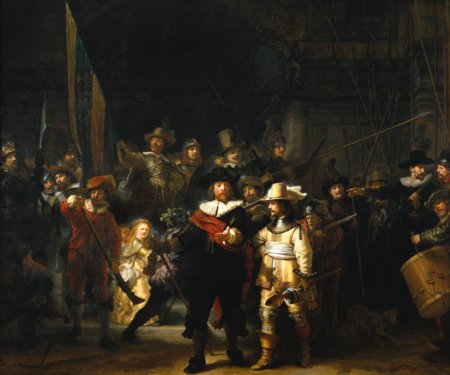Known to be one of the most celebrated portrait painters in history, Rembrandt Harmenszoon van Rijn was born on July 15, 1606 in Leiden, Dutch Republic. He came from a well-off family and was given a good education by his parents. During his younger years, he studied at a Latin school and attended the University of Leiden at age 14. Studying in the university did not please him, as painting was what he really wanted to do. Rembrandt eventually left the university to pursue his great love for the arts and became a student of Jacob van Swanenburgh, a local history painter. He stayed with this Leiden master for 3 years, after which he met his greatest teacher Pieter Lastman in Amsterdam. His apprenticeship with Pieter lasted for only 6 months, but it taught him enough to become a master portrait artist like his teachers. He returned to his homeland in 1624 and at age 22, he started teaching and sharing his craft to aspiring students. This was the beginning of Rembrandt’s great journey towards prominence in the world of arts.
As seen on his paintings, Rembrandt is considered to be the most precise and insightful portrait painters who ever lived. That is why most of his contemporaries believe that he is indeed the greatest portraitist of the human face. With his expertise in shadow and light effects known as chiaroscuro, his human portraits exude a realistic and soulful representation of feelings unlike any other artist. In a personal letter, Rembrandt expressed what he wanted to realize in his paintings and that is to portray the greatest and most natural movement.
Rembrandt was also deeply spiritual and biblical in his paintings. He was a master portraitist of biblical stories and divine interpretations. The Blinding of Samson was one of his biblical masterpieces which he created in 1636 at Frankfurt. He impeccably combined worldly and spiritual aspects that show his deep understanding of human existence.
Rembrandt’s most renowned painting was the Night Watch, or commonly called The Shooting Company of Frans Banning Cocq. It is an oil-on-canvass type of painting which he completed in 1642. The Night Watch is notably displayed in the Rijksmuseum, Amsterdam as the most famous painting in their exhibition. The portrait is well-known because of 3 notable features: its huge size of 363 cm × 437 cm (142.9 in × 172.0 in), the dramatic light and shadow or chiaroscuro effect, and the depiction of a military activity that seemed to be moving rather than static. The painting shows many characters; the most notable of which are Captain Frans Banning Cocq who was dressed in black and Lieutenant Willem van Ruytenburch who was dressed in yellow. There were many other figures in the painting but Rembrandt seamlessly presented the picture with great balance. Rembrandt also used symbolisms on this painting, as exemplified by the girl dressed in yellow with claws of a dead chicken on her belt. The claws represented the Arquebusiers, the soldiers of the sixteenth century. The victory of the Arquebusiers is signified by the prominent yellow color in the portrait, with the defeat of the opponent as characterized by the dead chicken. With the lifelike and controversial effect of the Night Watch portrait, it is undoubtedly one of Rembrandt’s greatest works.
Author: Shyxter
